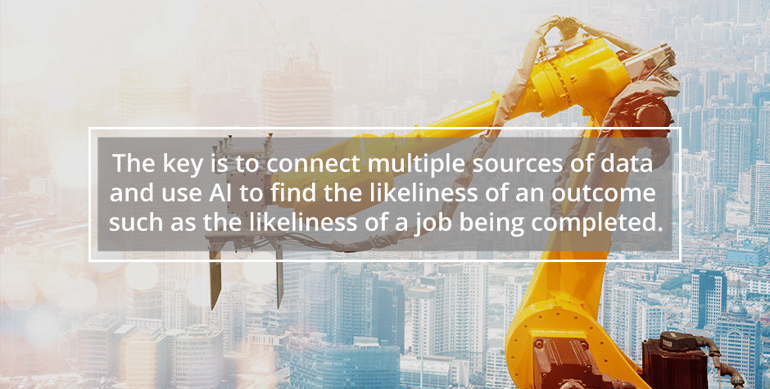
The phrases “Digital transformation” and “Artificial intelligence” (AI) are trending in the energy industry. Individuals and companies are trying to wrap their heads around these terms and make sense of what it all means.
How could it benefit your business? Where do you start? Do you need to have a Ph.D. in AI to utilize it? We will try to answer all these questions by end of this article.
Read on!
First, let's unwrap AI and get a sense of what it really is. AI is a set of computer programs that can look at large amounts of data and provide insights into hidden patterns, suggest improvements, and perform decision making processes. Think about a self-driving car that takes all the inputs from its radar sensors, cameras, and GPS in order to maneuver the car accordingly. It’s not explicitly programmed to drive that section of the road. It has been given rules and instructions to interpret what it sees (analyzing input data from multiple sources real-time) and drives itself according to a set of constraints, such as speed limit. So if it drives on a stretch of road that it has never been on, it can use the inputs and patterns to safely drive passengers to their destination.
Next, let’s talk about where can you start. The prerequisite is to capture the data so you could use it to find insight. If you have multiple disconnected systems, many Excel files, and no standard data formats, it will be almost impossible to make sense of it. Let me speak to the field operations side which I am most familiar with: We capture daily field tickets, inspections, incidents, safety information, etc. All these pieces of information are tied to jobs, customers, locations, supervisors, price lists and other sources of information. When this structured information is captured on a daily basis over many years, it becomes the place to look into interesting patterns and AI can be used to make sense of it. For example, in the estimation realm, let's say that we are capturing bids won, bids lost, job costing, bid vs. actual, equipment breakdown, near-misses, job delays, etc. for many, many jobs. This information can be used to predict (with some level of certainty) what the success rate of a given estimate is, what is the most likely completion rate of this job will be, and much more. The key is to connect multiple sources of data and use AI to find the likeliness of an outcome such as the likeliness of a job completion.

You don't need a Ph.D. to get this, right? No. You don’t need to build the algorithms from the ground up or to understand exactly how they work. There are very advanced algorithms already built and available to be used. Google offers TenserFlow as an open source machine learning framework for everyone. Amazon's SageMaker enables you to quickly building and train machine learning models. IBM's Watson is another good example. You do need to have some technical expertise to format and feed the data to these platforms for analysis and finding insights though.
The first place to start is to utilize systems to capture the data in a way that can be used for finding interesting information. Avoid Excel and unstructured data. Connecting disconnected systems and combining multiple sources of data is key. At Aimsio we capture field data such as estimation, dispatching, field tickets, LEMs, work orders, incidents, inspections, purchase orders, maintenance and many other field and operational data. This allows us to utilize the data to address interesting challenges such as preventative maintenance, equipment recertification and much more. Check out our website to read further on is AI right for your organization.




Let Us Know What You Thought about this Post.
Put your Comment Below.